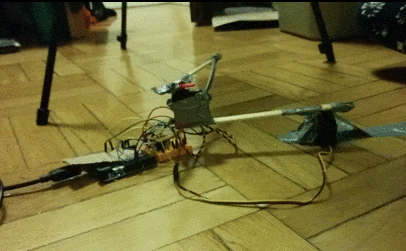Δ: light sound motion
Introduction: Light and Sound
A wave is energy that travels through space, oscillates over time.
Sound and light are characterized by the frequency and amplitude of their constituent waves.
Pitch is analogous to color; they are both described by frequency.
Volume is analogous to intensity; they are both described by amplitude.
Δ is a light harmonograph that examines the dimensionality of these wave features.
In particular, how light and sound act in motion through space and time — how they are perceived in the interstices of change along these dimensions.
Motivation
In building Δ I want to understand these three guiding ideas.
- Dimensionality: it takes many parameters, or dimensions, to precisely describe light and sound. How can we reduce the mental load of thinking about this dimensionality by creating intuition through visual metaphor?
- Representation: expressing music as light is essentially a problem of translation. From an information-theoretic perspective, how well does the physical representation of music or light encode the original while remaining intuitive?
- (Re)materialization: the vehicle through which music in particular is produced has been losing materiality with shifts in technology. From vinyl to cd now to mp3, music is intangible both in transmission and representation. This parallels a trend in interaction design that Bret Victor calls "pictures under glass." How do we return meaning to the materiality of information?

Δt: Music and Time
Music marks the passage of time; alternatively, a sound sequence is indescribable without change in time.
Tones are described by their duration, melodies by changing tones over time, rhythms by silences in between.
Mapping Sound to Light
An onset is a perceived beat in sound.
Sequential changes in sound energy are perceivable above a certain threshold — a delta.
Using an onset detection algorithm, Δ interprets music to control the pulsing of an LED.
Color loosely corresponds to pitch range, brightness to volume.
Δs: Light and Space
Light uncovers space; alternatively, space is imperceptible without light.
Mapping Light to Spatial Motion
Using a mechanical arm with two degrees of freedom, Δ oscillates over time to trace a light image in space.
A zero-dimensional point of light sweeps many one-dimensional arcs across a two-dimensional plane.
Through light, audiovisual and mechanical elements collectively produce a spatial performance, set in time to a piece of music.
Finale: Dimension, Representation, and Materiality
Isolating the spatial aspect of the device's performance creates a harmonograph image of the piece of music.
Music is translated into light, captured as representation — as visual information.
Collapsing the Temporal Dimension onto the Spatial
Using long exposure photography, the image of Δ's harmonic motion over time is projected onto one plane.
The result: a visual representation of the entire song over time.
Light and sound, two intangible qualities, are materialized in the Δ machine, performed by that machine, and encoded into the representation of a song through light.
Exhibits
Representations of select pieces of music as translated by Δ.
Cello Concerto No. 2 in D Major — Joseph Haydn
Rage Valley — Knife Party
America's Son — Air Review
Acknowledgements
- Prof. Jane Cox, for the inspirational and delightfully interdisciplinary seminar on light
- Kathleen Ma, for photography skills + overall awesomeness
- Zachary Liu, for sharing hardware and food and laughs
- Eric Li, for printing, feedback, conversation, being a designer or something
- Sarah Wang, Jennifer Cheng for super valuable feedback